7 Different Types of Lilies to Consider for an Elegant Garden
Elevate your garden game with this classic flower.
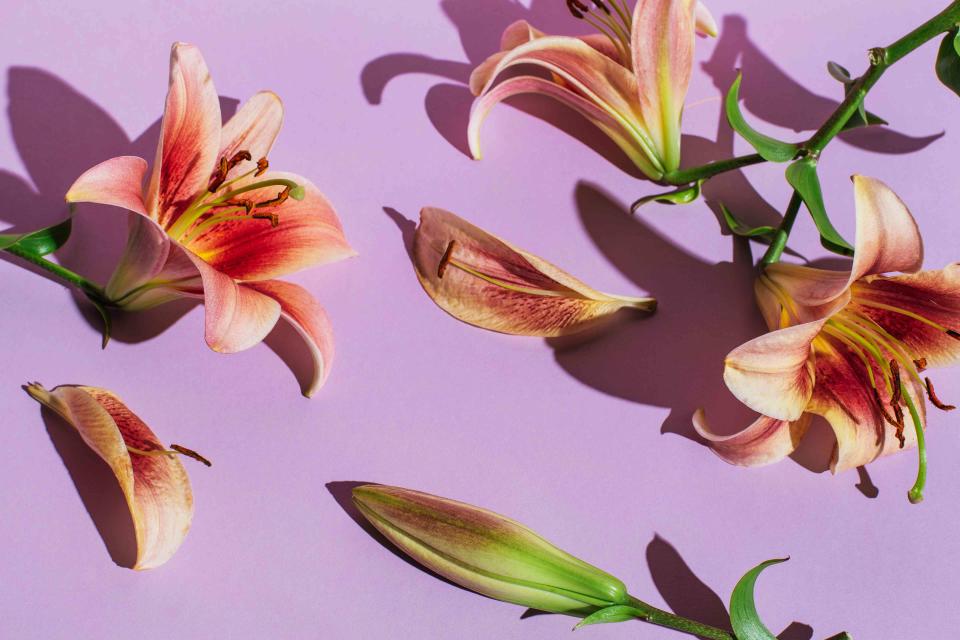
Tanja Ivanova/Getty Images
Lilies are a classic late spring and summer flower known for their elegant, star-shaped blooms that are incredibly fragrant. These plants, which start off as bulbs, are considered perennials and are often gifted in foil-wrapped pots, especially around Easter (hence, the iconic Easter lily).
While they might appear high-maintenance, lilies are actually relatively easy to grow, so you no longer have to resort to buying these from your local nursery or home improvement store when they’re in season. Here, we rounded up seven different types of lilies you should consider for your garden, plus maintenance and care tips.
Fun Fact
Peace lilies, canna lilies, and lily-of-the-valley are not true lilies, as they do not grow from bulbs.
Easter Lily
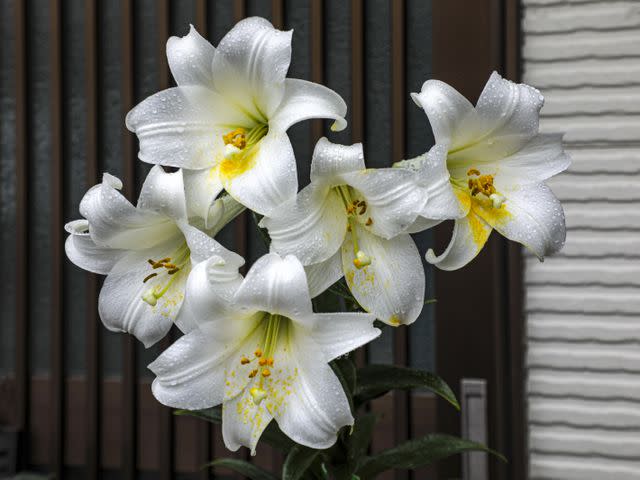
DigiPub/Getty Images
The iconic, white Easter lily (Lilium longiflorum) is probably the most popular lily you see in stores around spring time. These are often grown in greenhouses and then forced to bloom ahead of schedule (they naturally bloom in summer). Originally cultivated on the coast of southern Japan, Easter lilies prefer mild climates, such as the Pacific Northwest, but you can technically grow these in other regions of the country if their needs are met.
Sun: Full to partial shade; avoid full-on afternoon sun, which can scorch the blooms
Water: Avoid over- or under-watering; Easter lilies need to be consistently moist
Soil: Well-draining soil (ideally sandy; garden soil is fine)
USDA Hardiness Zones: 5 to 8
Related: How to Grow and Care for Easter Lily
Japanese Lily
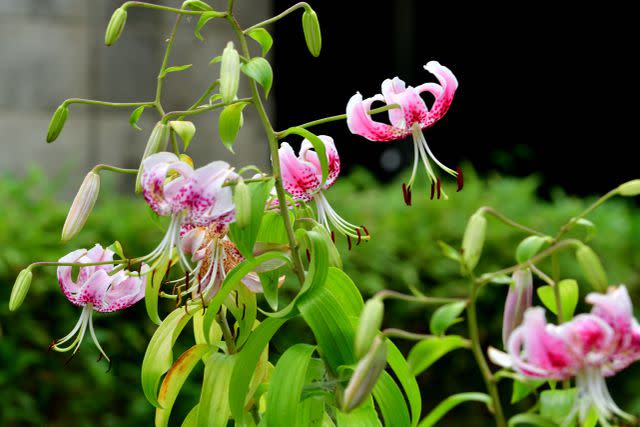
Getty Images
There are technically a few types of Japanese lilies, but the Lilium speciosum is the most common. As the name implies, this flower is from Japan, as well as southern China. The blooms, which appear in late summer, range from white to pink and their petals curve beautifully—in fact, the flowers can grow as wide as 6 inches in diameter! When well cared for, the flowers can grow to 5 or 6 feet.
Sun: Full to partial shade
Water: Avoid over- or under-watering; dry soil should be avoided
Soil: Well-draining soil
USDA Hardiness Zones: 5 to 9
Stargazer Lily
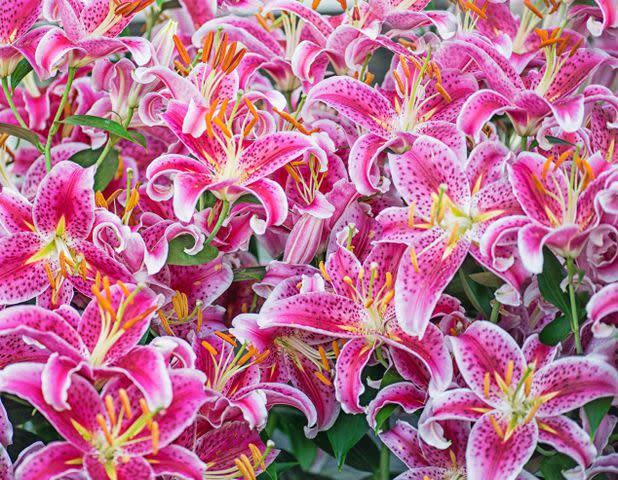
Vicki Jauron, Babylon and Beyond Photography/Getty Images
The hybridized Stargazer lily (Lilium orientalis 'Stargazer’) is another lily that might look familiar to you. Each petal of the flower has a strip of deep pink in the center and is tinged with a white border. These are quite show-stopping. Like Japanese lilies, these buds can grow to around 6 inches wide and bloom in late summer. Another reason they’re statement-making? They can release a potent aroma that some may find overwhelming.
Sun: Full to partial shade
Water: Avoid over- or under-watering; dry soil should be avoided
Soil: Loamy, well-draining soil
USDA Hardiness Zones: 4 to 9
Tiger Lily
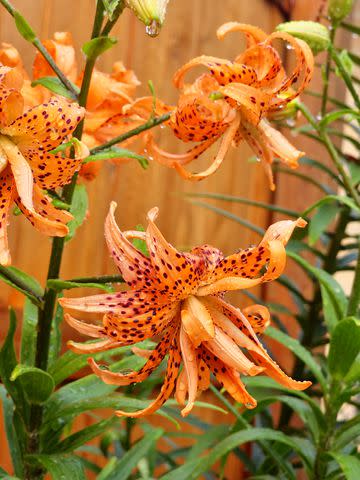
Jessica Tigges / 500px/Getty Images
Tiger lilies (Lilium lancifolium) look and sound exotic—their glowy, spotted orange blooms resemble the tigers of East Asia, where the plant is originally from. These beautiful flowers blossom in mid to late summer. Fortunately, tiger lilies are not super high maintenance and can handle a tiny bit of drought.
Sun: Full to partial shade
Water: Avoid over- or under-watering; mature tiger lilies can handle some dryness but it should be avoided
Soil: Well-draining soil
USDA Hardiness Zones: 3 to 9
Related: How to Create a Pollinator-Friendly Garden
Madonna Lily
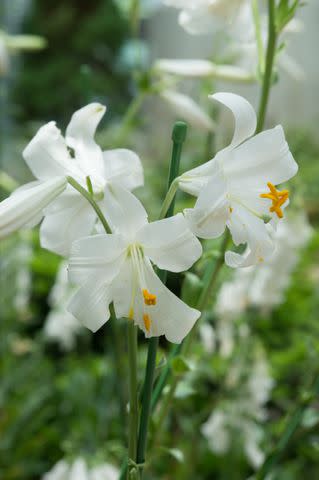
shuichi kadoya/getty images
The Madonna lily (Lilium candidum) is an early bloomer, compared to other lilies. These will blossom in late spring to early summer. These are more “trumpet-like” in their appearance compared to the classic Easter lily, and they are from the Middle East. This lily can actually produce up to 20 blossoms per stem!
Sun: Full to partial shade
Water: Avoid over- or under-watering; dry soil should be avoided
Soil: Well-draining soil
USDA Hardiness Zones: 6 to 9
LA Lilies
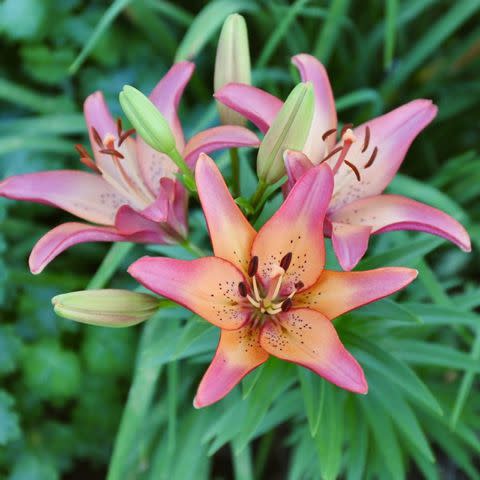
Despite the name, these lilies are not from Los Angeles. The longiflorum asiaticum are hybridized lilies—they’re the result of crossing Easter lilies with Asiatic lilies. Their flowers are on the larger side but do not emit much fragrance, making it ideal for anyone who wants to go easy on their olfactory senses. They also have longer vase lives when cut. These bloom in early to mid-summer.
Sun: Full to partial shade
Water: Avoid over- or under-watering; soil should be consistently moist
Soil: Well-draining soil
USDA Hardiness Zones: 3 to 9
Orienpet Lily
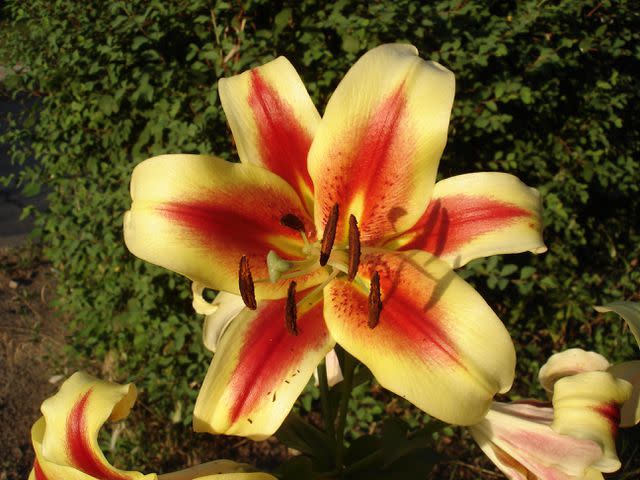
matricul/getty images
Another hybrid lily, this one is incredibly robust—it has higher heat tolerance than other lilies and is quite fragrant. Plus, the flowers, which bloom in midsummer, can grow to a massive 12 inches wide! These are sometimes marketed as "Lily Trees." While they’re quite tall (3 to 8 feet) and thick, they’re not actually trees.
Sun: Full to partial shade
Water: Avoid over- or under-watering; can handle some dryness but it should be avoided
Soil: Well-draining soil
USDA Hardiness Zones: 4 to 9
According to the ASPCA, lilies are quite toxic to pets, especially cats! Consider skipping this plant variety if you’ve got an outdoor cat.
Related: 10 Toxic Houseplants Pet Owners Should Avoid and Pet-Friendly Swaps
For more Real Simple news, make sure to sign up for our newsletter!
Read the original article on Real Simple.

